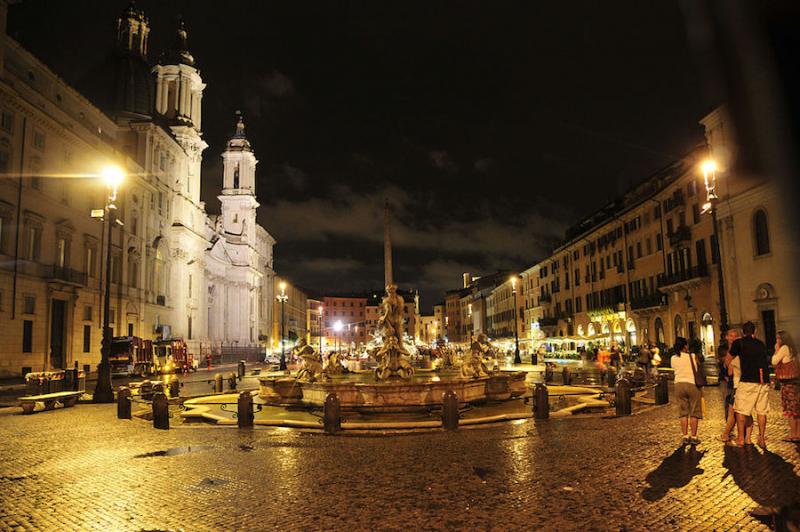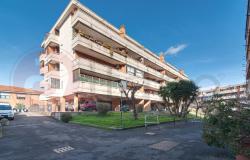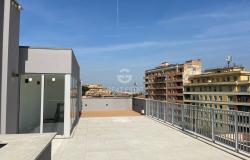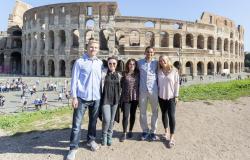by: Caterina Pomini. Main photo credit: Flickr CC: Hanc1
The night time adds magic to beautiful cities, and Rome is no exception. On my Roman night walks, I like to sit on the stone balustrade of Lungotevere degli Altoviti and enjoy the view of Castel Sant'Angelo softened by velvety lighting. I love to keep walking along the River Tiber and reach Piazza di Spagna via Lungotevere Tor di Nona, Lungotevere Marzio, Via Tomacelli and Via dei Condotti. Once there, I usually have a glass of wine near the Spanish Steps and – if I'm not tired – I set off for what is probably my favourite place in Rome – Piazza Foro Traiano – in order to admire all those fascinating Roman remains under the moonlight.
 [Castel Sant'Angelo, Photo by Stefano Avolio, Flickr Creative Commons]
[Castel Sant'Angelo, Photo by Stefano Avolio, Flickr Creative Commons]
The last time I went to Rome was at the end of January this year and I was visiting the city with a friend of mine from London. Since it was his first time in the Eternal City, we decided to join an evening city tour with CiaoFlorence and, despite the chill, we had a lot of fun and learned a lot of interesting things thanks to our passionate and knowledgeable guide. We met the group at 9.00pm near the Vatican Museum's main entrance and climbed aboard a luxury coach that took us on a journey through the most famous streets of the city; the first stop on our itinerary was Castel Sant'Angelo, originally commissioned by Hadrian as a mausoleum for himself and his family.
Once the tallest building in Rome, this majestic castle was built on the banks of the River Tiber around 123 AD. Hadrian's ashes were placed here in 139; however, during the Visigoth sack of Rome, the emperor's ashes were scattered by barbarian looters. Legend has it that Archangel Michael – the leader of all angels – appeared atop the Castel Sant'Angelo, sheathing his sword as a sign of the end of the plague of 590, thus lending the fortress its present name. The structure was converted into a castle in the 14th century and – in times of danger – it provided refuge to many popes. Castel Sant'Angelo is certainly one of Rome's most famous landmarks (and one of my favorites...) and it has appeared in books (e.g. Dan Brown's Angels & Demons) and many popular movies.
After having admired this dramatic Roman icon, we moved over to Piazza Venezia, most famous for the Vittoriano, a mountain of white marble that towers over the square and the surrounding buildings. Built between 1885 and 1911 to honour Italy's first king Vittorio Emanuele II, the Vittoriano represents the majesty of Rome and is home to the Museo Centrale del Risorgimento (Museum of Italian Unification), the Tomb of the Unknown Soldier and the Complesso del Vittoriano, a wonderful art gallery that hosts fantastic exhibitions. Next to Piazza Venezia is Piazza Foro Traiano – ok, it is definitely my favourite place in Rome! – which overlooks the spectacular Trajan's Forum.
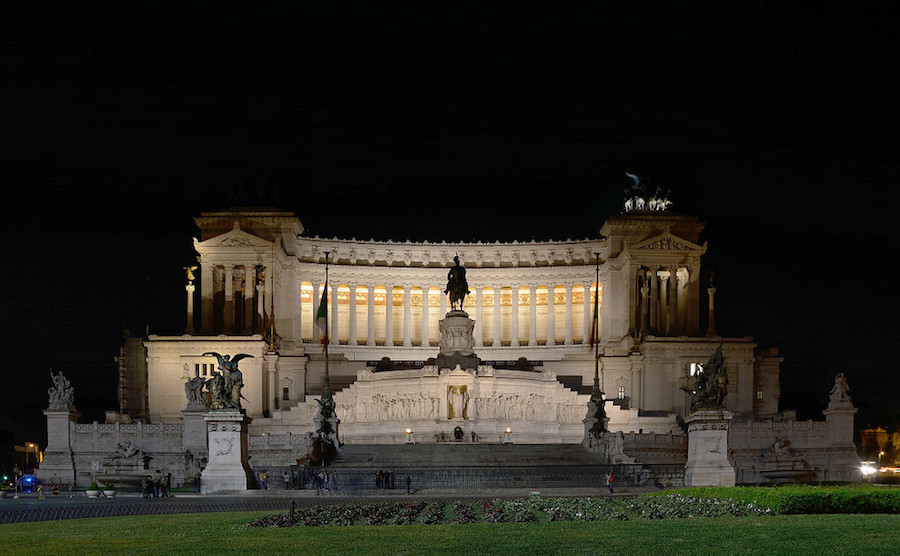 [The Vittoriano, Flickr CC: Livioandronico2013]
[The Vittoriano, Flickr CC: Livioandronico2013]
The Circus Maximus is only 8-10 minutes away from Piazza Venezia. Now a large stretch of dusty green grass often used for concerts and events, the first and largest chariot-racing stadium in ancient Rome was 621 metres (2037 ft) in length and 118 metres (387 ft) in width and could accommodate around 250,000 people! Situated between the Palatine and Aventine hills, its origins go back to the 6th century BC and it was also occasionally used for gladiator fights and processions. The Circus reached its maximum splendour after the Great Fire of Rome (64 AD), when it was rebuilt by Trajan; the last chariot race took place in 549 AD, almost a millennium after the first race was held in the Circus.
 [Ancient map of the Circus Maximus, flickr CC, photo credit: BibliotecaGeneralAntonioMachadoSevilla]
[Ancient map of the Circus Maximus, flickr CC, photo credit: BibliotecaGeneralAntonioMachadoSevilla]
Not far from the Circus Maximus stands one of the world's most popular tourist attractions: the Colosseum. Originally known as the Flavian Amphitheatre, this magnificent three-tiered building was completed in 80 AD and could seat between 50,000 and 80,000 people. What else could I say about the Colosseum? It is the largest amphitheatre ever built, it is still considered one of the greatest works of Roman architecture and engineering... In other words, you can't leave Rome without visiting it, it would be like going to Athens and not visiting the Acropolis! Right next to this massive amphitheatre stands the Arch of Constantine – the most recent of Rome's three surviving triumphal arches. It was built at the beginning of the 4th century to celebrate the victory of Constantine over Maxentius.
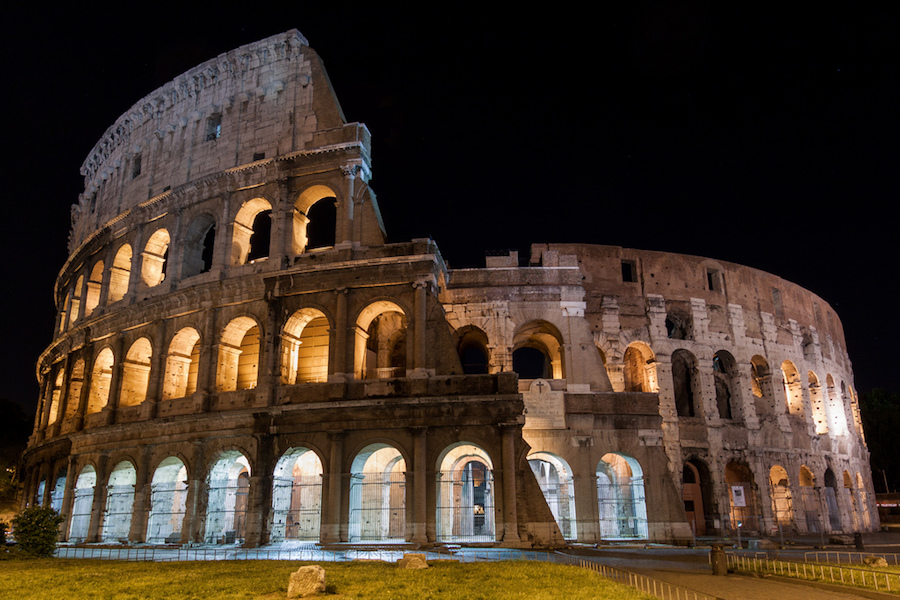 [The Colosseum, Flickr CC, photo credit: timsackton]
[The Colosseum, Flickr CC, photo credit: timsackton]
The Theatre of Marcellus is located to the east of the Jewish Ghetto. Planned by Julius Caesar – who was killed before its construction could begin – it was completed under Augustus and named after his favourite nephew, Marcus Claudius Marcellus. The design of the theatre was a model for the Colosseum, which was built some time later. In the 16th century, a Renaissance mansion (the elegant residence of the Orsini family) was constructed atop the ruins of the theatre. Next to the Theatre of Marcellus is the Porticus Octaviae, which leads to the Jewish Ghetto: home to the Synagogue of Rome, this lovely area is literally studded with artisans' workshops, kosher bakeries and nice restaurants. A couple of years ago, I was in Rome with another friend and we had a very pleasant lunch at Il Giardino Romano, located at No. 18 Via del Portico d'Ottavia.
From the Jewish Ghetto you can easily reach Tiber Island, a picturesque boat-shaped isle that has long been associated with medicine and healing. Connected to the main land by two ancient bridges, Ponte Fabricio and Ponte Cestio, in the 3rd century BC, it was home to the Temple of Aesculapius, the God of medicine, healing, rejuvenation and physicians. Tiber Island is about 270 metres (885 ft) in length and 67 metres (220 ft) in width at its widest point; where once stood the Temple of Aesculapius, now stands the Basilica di San Bartolomeo all'Isola (998 AD); opposite the church is the Fatebenefratelli Hospital. During the Summer, Tiber Island hosts L'isola del Cinema Film Festival, whose purpose is to support and honour both emerging and well-known directors.
The penultimate stop on our itinerary was Piazza Navona, one of Rome's liveliest and most beautiful squares. Built on the former Stadium of Domitian, its main attraction is certainly the Fountain of the Four Rivers, a masterpiece by Gian Lorenzo Bernini. Our tour guide told us all about this enchanting Baroque fountain, things I already knew and things I wish I had known before... you can read about things as much as you want, but going with a trusted tour guide allows you to get a deeper understanding of the works of art. Besides the Fountain of the Four Rivers, Piazza Navona has also two other fountains: the Fontana del Nettuno (Neptune fountain) and the Fontana del Moro (Moor fountain), both were designed by Giacomo della Porta in the second half of the 16th century.
After nearly two hours of listening, talking and touring, we set off for St. Peter's Square, the last stop on our itinerary. Designed by Gian Lorenzo Bernini in the mid 17th century, this breathtaking piazza looks like a huge keyhole and creates the perfect entry point to spellbinding St. Peter's Basilica. The obelisk in the centre of the square was brought to Rome by Caligula from Heliopolis; two semi-circular colonnades – representing “the motherly arms of the church” – encircle the piazza. Michelangelo's magnificent dome towers above everything, higher than its golden cross there is only heaven.
 Rome by Night Illuminated Tour leaves Tuesdays, Thursdays and Saturdays at 9.00pm and lasts a duration of 2 hours. The cost is 43€ per person.
Rome by Night Illuminated Tour leaves Tuesdays, Thursdays and Saturdays at 9.00pm and lasts a duration of 2 hours. The cost is 43€ per person.
Make sure to wear comfortable shoes and eat something before you leave!
